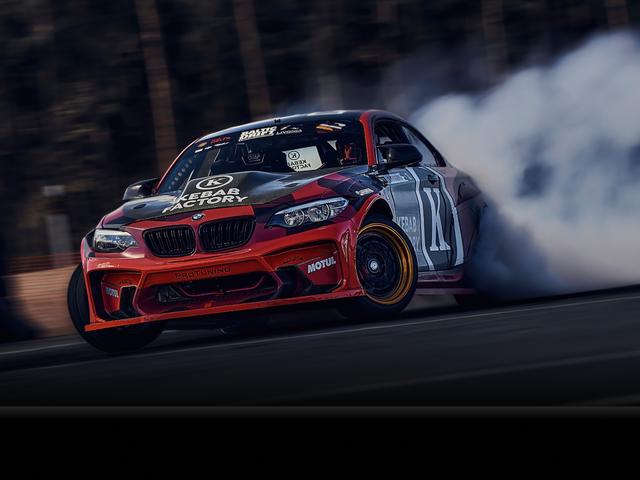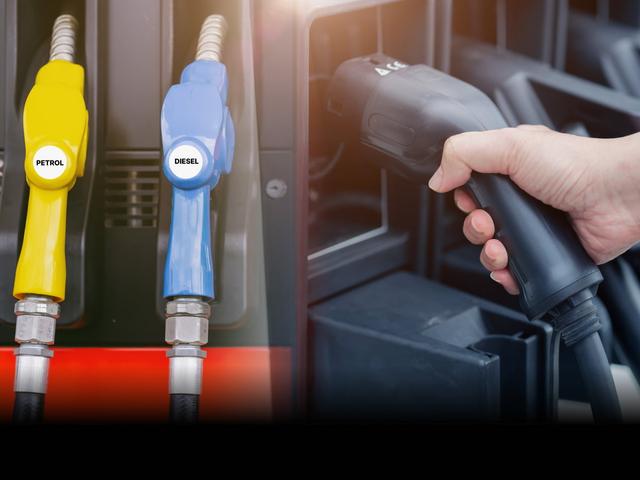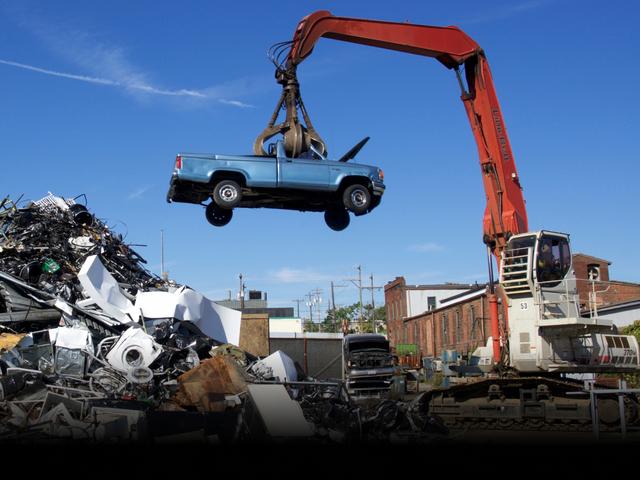Seeing a scratch on the car can be an annoying experience for any car owner. However, learning how to remove car scratches can help minimise the frustration. There are varying degrees of scratches ranging from minor grazes to significant scuffs to major, deep scrapes. There are several ways to remove scratches from cars, whether a slight scuff on the door or a deep scratch on the bumper. Some car scratches can be easily fixed, while others may require professional attention at a body shop.
Knowing the type of car scratch is the first step towards a successful car scratch repair process. We will dig deeper into car scratches, the levels of damage they can inflict, ways to repair car scratches on paint and bodywork, their associated costs and the various car scratch repair kits available in the market.
Types of car scratches explained
The paint on a car is composed of three different layers.
- The primer – Primer is the initial or base layer that is applied first on the bare metal surface of the car. The main function of this layer is to create a smooth and uniform surface that allows the next layer, the base coat, to adhere to the underlying material evenly. The primer also provides protection to the metal surface from rust, corrosion and solvent-absorption.

- The base coat – This is the second coat, containing water or solvent-based pigments, that gives the car its specific colour. The base coat is applied multiple times till the desired shade and finish is achieved. It acts as the base layer for the third and final layer, the clear coat.
.jpg)
- The clear coat – Clear coat is what gives the vehicle its gloss and shine. It provides more depth to the underlying paints and its reflective properties gives the car a vibrant and polished appearance. Moreover, the clear coat protects the layers underneath from harsh weather, UV rays, debris and bird droppings.

Car scratches are categorised by the depth of the scratch, or which layer of paint has the damage penetrated to. So, based on the types of paint layers described above, there are three main kinds of scratches, namely; primer scratches, paint scratches or base coat scratches and clear coat scratches. The methods to remove car scratches vary depending on the type and severity of the scratch. An overview of the three kinds of scratches, from least severe to most damaging, is given below:
Clear coat scratches – These scratches affect the top clear coat layer over the paintwork and are usually shallow. They do not penetrate the basecoat and are mostly unnoticeable scratches, although in some cases the scratches may be deeper and more defined. Clear coat scratches are primarily caused by rough brushes or stiff sponges used for cleaning, road debris like gravel or rocks, accidental contact with sharp objects like keys or rings or lack of maintenance and proper upkeep of the car.
On the bright side, it is quite easy to repair and remove car scratches on the clear coat. As these scratches are mostly superficial or shallow, they can be removed by using a mild polishing compound and gently wiping it with a microfiber cloth in a circular motion. If the scratch is deep and pronounced, you may need professional assistance to apply more advanced techniques to remove car scratches, like machine polishing or repainting.
Paint scratches or base coat scratches – These scratches affect the base coat layer or the actual paintwork of the car, often exposing the car’s metal surface. As paint scratches damage the colour layer of the car, they are easily noticeable. Paint scratches should be tended to immediately as they can lead to corrosion, which in turn may affect its value. Paint scratches are usually caused by physical collisions with hard objects, road debris or the use of abrasive materials while cleaning.
It is a little more challenging to remove car scratches that affect the base coat or the paint layer than scratches on the clear coat. If the scratches are minor, they can be fixed by polishing and buffing the scratched area or by using a touch-up paint compound and sealing it with a clear coat. For deeper scratches, wet sanding may be required, which involves sanding the scratched area to level it and then polishing it to achieve the original shine. For more severe paint scratches, hiring a professional is recommended to apply a new base coat and a clear coat after sanding.
Primer scratches – Primer scratches are the most severe type of scratches, as they penetrate the paintwork and affect the primer layer, exposing the metal surface. These are usually deep scratches caused by physical collisions, or by road debris like rocks and stone chips. Deep primer scratches stand out due to their grey-white appearance and adversely affect the car’s look. They are also prone to rusting.
Although, touch-up paint compounds can conceal minor primer scratches, it is advisable to seek professional help to remove car scratches that damage the primer layer. Sanding, priming, repainting and applying a clear coat is the best way to deal with primer scratches.
How do I fix the scratches on my car?
There are various ways to remove a scratch from a car, depending on its type and severity. While a minor scratch can be easily removed by a little polishing and buffing, a deeper scratch may need professional work. A few ways to remove car scratches, whether clear coat, paint or primer, are given below:
1. Use a mild abrasive compound

Mild abrasive compounds like the Motomax 2K Rubbing Compound or the Waxpol Rubbing compound are excellent for removing scratches from a car that are not too deep. The method is quite simple. Clean the affected area properly with soap water and let it dry. On a clean microfiber cloth, apply a small amount of the compound and rub it gently in a circular motion over the scratched area. Repeat, if needed, till the scratch is no longer visible. Wipe away any excess compound. In this process, it is important to use a clean and good-quality microfiber cloth to prevent any additional scratching during wiping.
2. Apply touch-up paint

To remove deep car scratches that penetrate the surface and expose the paintwork or the primer, touch-up paints are a great option. Clean the scratched area with soap water and let it dry. Then apply the touch-up paint in layers using a fine brush, allowing one layer to dry before applying the next. Finally, use a clear coat to seal off the repaired paintwork. Ensure that the touch-up paint has the same colour code as the car’s paint for an indistinguishable fix.
3. Use a clear coat scratch repair kit
A clear coat scratch repair kit is a DIY kit that comes with a scratch repair compound, a clear coat sealant and a microfiber cloth. After washing the affected area, apply the solution on the scratch as per the instructions given on the kit. Allow it to dry, and then wipe off the excess using the clean microfiber cloth. Follow the instructions provided with the kit properly for best results.
4. Use a polishing compound
A minor, shallow scratch can be removed using a polishing compound. Clean the scratched area, use a recommended amount of polishing compound on a clean cloth and gently rub on the scratch in a circular motion. Wipe it off with a dry cloth for a shiny, polished, scratch-free look.
5. Use a clay bar

A clay bar is primarily used to get rid of minor scratches and surface contaminants before repairing any deeper scratch. Wash and dry the scratched area thoroughly and apply a clay bar lubricant. Then, rub the clay bar on this area to even it out and wipe it off with a clean, microfiber cloth.
6. Use a primer and paint pen

Another car scratch remover is the primer and paint pen, which can be used to fix minor as well as deeper scratches that expose the primer layer. Clean the affected area thoroughly with soap water. Once dried, use a layer of primer on the scratch. Wait for the primer to dry and then carefully use the paint pen with matching paint to fill in the scratch. Once done, apply a clear coat to seal the fixed scratch.
7. Seek professional help
For deeper scratches that affect the paint, primer and the metal surface, it is best to hire a professional. Professionals will have the expertise, as well as the necessary specialised tools to help remove severe scratches without further damaging any part of the paintwork.
How much does it cost to remove car scratches?
The car scratch repair cost in India may vary depending on several factors like severity of the scratch, the location of the scratch on the car and the repair method used. The three most common repair procedures are given below, along with an approximate range of the costs associated with each:
- Using DIY scratch repair kits
These repair kits are very effective if one needs to remove car scratches that are not too deep. They are also the most cost-effective method to get rid of minor scrapes. Their price varies depending on the quality and brand of the product. It is important to remember that the scratch repair kits do not work as well on deep scratches or on certain car parts that experience serious paint damage like the bonnet or the bumper.
Cost Range – ₹200 – ₹2,000 - Hiring professionals services for detailing
For deeper scratches that penetrate the clear coat and paintwork, it is advisable to give the vehicle to a car-detailing professional. Detailers use specialised equipment, products and techniques to remove car scratches and provide a glossy, polished finish.
Cost Range – ₹2,000 – ₹10,000 - Taking the car to a body shop
For extremely severe scratches that affect the primer layer and reach the metal’s surface, it is advisable to take the car to a body shop. Body shop services are the most expensive and include repainting, polishing and restoring the original shine and finish of the vehicle.
Cost Range – ₹5,000 – ₹20,000
Preventive measures for car scratches
We have discussed how to treat minor scratches and also how to remove deep scratches from a car. However, the best way to ensure your car is in top shape is prevention of these scratches. The following habits can help protect your car from unwanted scratches:
- Wash the car regularly using a soft brush or sponge to remove debris that can cause scratches.
- Wax the car occasionally to add a protective layer against dirt and other debris.
- Use protective films to cover collision-prone areas like the bonnet, the bumper or the side-mirrors.
- Park carefully, ensuring ample room between surrounding cars, and avoid parking tight spaces.
- Use a car cover, especially when parking outdoors for long periods, to protect against dust, bird droppings and accidental scratches.
- Monitor the car regularly for scuffs and dirt and nip any minor scratches in the bud with some touch-up paint and polishing.
- Drive mindfully to avoid collisions and debris-filled roads.
How effective are scratch removers?
Scratch removers either get rid of the scratch completely or reduce its visibility. They are composed of abrasive compounds or fillers or sometimes even a combination of both. These substances smooth out and blend the scratched area with the surrounding paintwork, thus making the scratch quite invisible.
The effectiveness of car scratch removers depends on how severe the scratch is. To remove scratches on the clear coat or minor scuffs or paint defects, scratch removers are the best and the cheapest option. However, scratch removers may not be enough to fix deep scratches that have affected the paintwork or exposed the metal surface. While purchasing a scratch remover, buy a good quality one or consult a body shop for a recommendation.
Can a car scratch be painted over?
Yes, most definitely, but one should know the right way to do it to ensure a clean fix. If the scratch is deep, it must be repaired first, before applying any paint. Prepare the surface by washing and drying it and then use a sandpaper to fill and level out the scratch with the surrounding paintwork. Apply the touch-up paint in thin layers and allow each layer to dry out before the next coat. A paint pen or a thin brush can be used to apply the paint. Once the paint matches the surroundings, apply a layer of clear coat to seal the repair work. Add a nice polish with a dry cloth to finish off with a shine.
What kind of scratches are easy to buff out?
Car scratches are a heartbreaking sight irrespective of their severity. While some scratches are deep and might need professional detailers and a longer time to remove them, there are also surface-level scratches that can be easily buffed out, leaving the car looking as good as before. These scratches are usually clear coat scratches that have not penetrated the basecoat. To remove car scratches like these, three things are needed – a buffing compound, a polishing compound and a clean, dry microfiber cloth.
Wash and dry the affected area thoroughly first. Then use a recommended amount of buffing compound on the cloth and gently rub over the scratch area in a circular motion. Continue to buff till the scratch is no longer visible. Repeat the process with the polishing compound till there is a shiny and smooth finish. Some minor paint scratches can also be buffed out similarly, but it is better to seek professional help if the scratch appears deeper and is more noticeable.
Does insurance cover car scratches?
It completely depends on the kind of insurance coverage one has and the circumstances under which the scratch occurred. The two main types of coverages are discussed below:
- Comprehensive insurance coverage – Comprehensive insurance coverage is optional in India, and it covers any damage to the car apart from collision damages. Scratches from falling objects or accidental contacts are usually covered under this policy.
- Third party liability coverage – In India, third party liability coverage is mandatory by law, but it does not cover damages to the owner’s car or car scratches. It only covers injuries or damages to third parties caused by the owner’s car.
The bottom line
Maintaining a scratch-free car is not just about appearance, but also about trying to maintain its value. Our guide to car scratches, and how to identify and repair them, aims to provide a comprehensive overview, so you can take the necessary measures to maintain and repair your vehicle in ways, and budgets that suit you best.
FAQ
Q. How can I remove scratches from my car at home?
Minor clear coat scratches can be removed at home in your garage. If it is a minor scratch, a DIY kit can be used to fix it. If the scratch is deeper, then the following steps can be followed:
- Clean the area and apply a scratch removing compound or abrasive using a microfiber cloth.
- Rub the area gently in a circular motion.
- Give it a good buff with the cloth till the scratch blends in with the paintwork.
- Finally, apply some wax to give it a nice, polished finish.
Q. Does toothpaste remove car scratches?
Since toothpaste is a mild abrasive, it can be used to fix minor scratches. Thoroughly clean the scratched area, apply toothpaste on a microfibre cloth and rub the scratched surface in a circular motion till the scratch is invisible.
Q. What is the best car scratch remover?
Following is a list of quality scratch removers for car available in India:
- Chemical Guys Optical Grade Hybrid Compound
- Turtle Wax Hybrid Solutions Pro 1 & Done Compound
- Turtle Wax Hybrid Solutions Ceramic Liquid Spray Coating
- Meguiar's Hybrid Ceramic Car Spray Wax
- 3M Car Care Cream Wax
- Liqui Moly Metallic High Car Polish
Q. Are car scratches easy to remove from my car?
The deeper the scratch, the harder it is to remove from your car. Superficial, clear coat scratches can be easily buffed out using a simple DIY kit, or by rubbing it with an abrasive compound using a microfiber cloth. For deeper scratches, it is better to seek professional help as they may worsen if treated improperly.
Q. What is a good quality rubbing compound for scratches?
A list of the top rubbing compounds is given below:
- Waxpol
- Motomax 2k
- Turtle Wax
- Sheeba
- Meguiar’s Ultimate Compound
Q. How can I remove scratches from a car bumper?
To remove car scratches from a bumper, you will need a polishing compound or an abrasive compound. Clean and dry the affected area of the bumper. Use sandpaper to smooth out the scratch, if needed. Apply the compound on a microfiber cloth and gently rub it over the scratch in a circular motion. Then give it a good polish with a cloth. If the bumper scratch is deeper and discoloured, use matching touch-up paint to blend it with the car paint.



.jpg&w=3840&q=50)
.jpg&w=750&q=50)






























.jpg&w=640&q=75)
